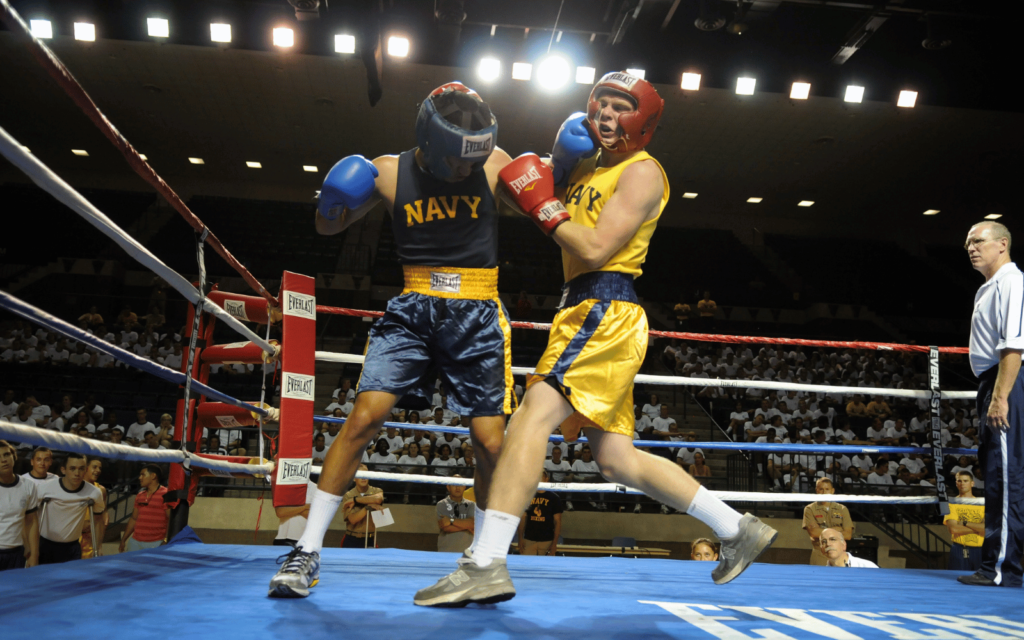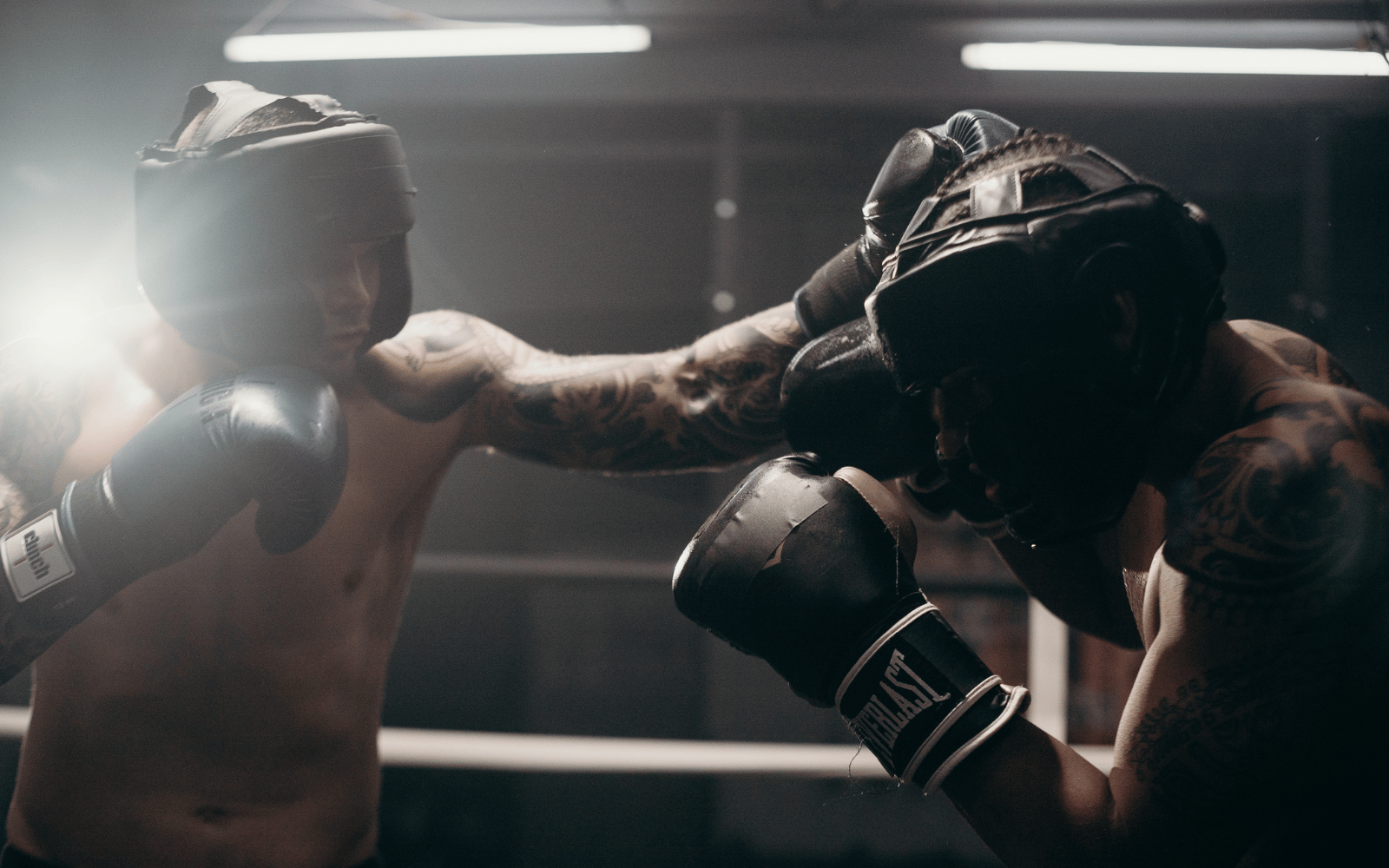Learning how to stop flinching in a combat sport like boxing or Muay Thai takes a fair amount of mental and physical training.
Stepping into the ring even to spar takes courage. And every fighter knows that getting punched is part of the deal.
But a natural reaction like flinching or involuntarily closing your eyes and turning away when your opponent throws a punch can be extremely dangerous. It leaves you open and unable to see the next blows coming.
So, in this article, we’ll break down some tips on how to stand your ground in the ring without sacrificing defense.
Follow these tips, and you’ll be on your way to staring down those punches like a future champ!
Tips For How to Stop Flinching in Boxing
Let’s first get into some basic tips to consider as you develop your threshold for flinching.
Here are some of the most important tips you’ll want to keep in mind.
Get Comfortable Being Uncomfortable
Getting punched (or kicked in Muay Thai) can be scary if you’ve not done any boxing training before.
It’s an uncomfortable feeling, but with time spent in the ring, you’ll naturally build your tolerance and overcome your fear of getting hit.
For boxing beginners you should start first with body shots.
Have a partner throw soft punches to your stomach and sides while you work on keeping your eyes open and stance steady.
This also works in other sriking martial arts.
As you get used to those body blows landing, you’ll gain confidence to take harder hits. Eventually, you’ll be ready for your coach or sparring partner to throw controlled headshots – which may still feel uncomfortable.
But staying calm and keeping your eyes focused on your opponent rather than the fist coming at you will program your brain and body to at least not flinch away.

After many rounds of catching punches on your gloves and headgear, taking hits from basic boxing combinations may start to feel normal. Once you conquer that mental block, you’ll stand strong against those punches without hesitation.
Start Training Counters
Practicing and drilling counter-punches requires you to get used to incoming strikes.
Ask your trainer for boxing exercises to develop your countering.
For example, they could throw slow, light jabs while you work on countering with faster combos.
As you get more comfortable countering slow shots, your trainer can start to pick up speed and power.
This training method will improve your ability to stand your ground while focusing your eyes and reactions on firing back.

Use Objects to Help
Whether it’s dodging a tennis ball, focus mitts, or even a boxing glove taped to the end of a broom handle, objects can help provide a relatively painless way to build your tolerance to not blink or flinch to incoming strikes.
Have your trainer toss tennis balls at you while you work on keeping your eyes open and stance steady as the balls bounce off your gear.
Over time, they can slowly increase the speed and randomness of the balls or other objects so that you can get your body and mind used to not flinching as things fly at your head.
Drills To Help You Stop Flinching
Let’s go over some of the best drills to ingrain fortitude and overcome the flinch reflex necessary to stand firm when the punches start flying.
Tit for Tat Drills (Light Sparring)
A light sparring session with a partner can help desensitize your nervous system reaction to incoming punches.
Remember – you want to get comfortable being uncomfortable!
To help do this, you’ll want to throw controlled, moderate-power punches at each other’s gloves and body (and maybe wear headgear if you want too).
Staying disciplined and composed while taking and giving light punches back and forth will quickly build your flinch response and mental tolerance not to flinch or close your eyes.
Back Against the Wall Defense Drills
Doing situational defense sparring drills with your back against the wall forces you to stand your ground.
With nowhere to go, you have to focus on proper head movement by bobbing, weaving, and slipping shots instead of leaning away.
Practicing elusive defense against the wall will train your body and mind to stay poised in the pocket while keeping your eyes on your opponent like Anderson Silva taunting with his hands down.
Reflex Ball Drills
Working with a small reflex ball on a string helps sharpen your reactions so you don’t flinch.
As the ball rapidly towards your face, stay present and keep your eyes peeled to keep the ball moving.
Staying composed as the reflex ball zips by and resisting the urge to flinch or close your eyes will help build tremendous hand-eye coordination and poise.
And also, don’t forget to check out YouTube for some awesome drills and tips. There are a ton of great boxing channels breaking down the techniques we covered, as well as some new ones.
Like this:
Dangers of Flinching in Combat Sports
So now you know how to help you overcome flinching.
And while you may feel a bit silly practicing some of these drills, always remember why overcoming this flinch reaction is so important.
In actual boxing or a real fight, a trained opponent may use feints to create openings and land their attacks on you. This will create vulnerabilities that someone with accuracy can capitalize on.
If unprepared for them, feints can overwhelm you. Constantly flinching at potential threats can create uncertainty and overload your brain. This can make you distracted, tired, or even shut down into ‘survival mode.’
It also can signal to your opponent that they are faster than you. And in a battle of wills, where your opponent is gaining confidence, and you are second-guessing yourself and losing focus, is a bad place to be.
You want to be aware and present at all times. Not flinching or closing your eyes – because as Mike Tyson says, “the punches that knock you out are those you don’t actually see.”
You’ll want to always be present and aware. And that’s where your boxing style and stance can have a big impact.
A defensive style like the Philly shell can be relatively easy to maintain awareness while staying out of danger. But it takes quite a bit of practice and sparring to get used to.
Summing Up How To Stop Flinching
Let’s wrap up by recapping the keys for how to stop flinching in boxing. Flinching takes time and dedication to overcome.
But every accomplished fighter in history had a first day when those fierce punches shocked their system.
Stick to the basics. Get comfortable catching shots with proper defense. Train your reactions and instincts until standing your ground as the fists fly at you feels like second nature.
Remember, start by getting comfortable with being uncomfortable. Build up your mental block slowly, at your body’s pace.
Perfect taking light, controlled punches first. Then, up the intensity bit by bit, making sure to always emphasize safety with your coach and sparring partners.
Next, drill countering, defense, and reflex techniques constantly to etch those poised reactions into your muscle memory.
As you integrate these skills over many, many long days, keeping your eyes peeled and posture firm against intense strikes will become a natural response.
Before you know it, you’ll step into that ring, ready to make opponents blink first as you counter and conquer without flinching.
